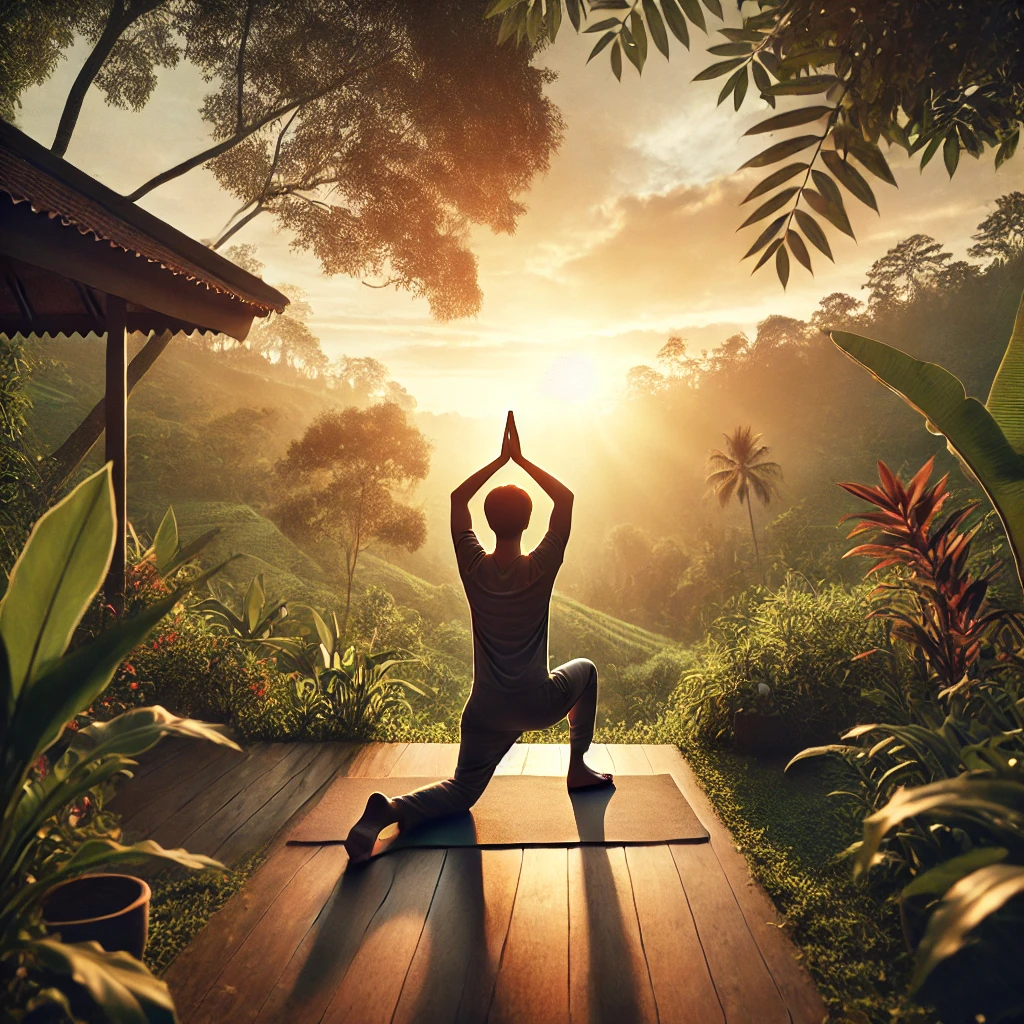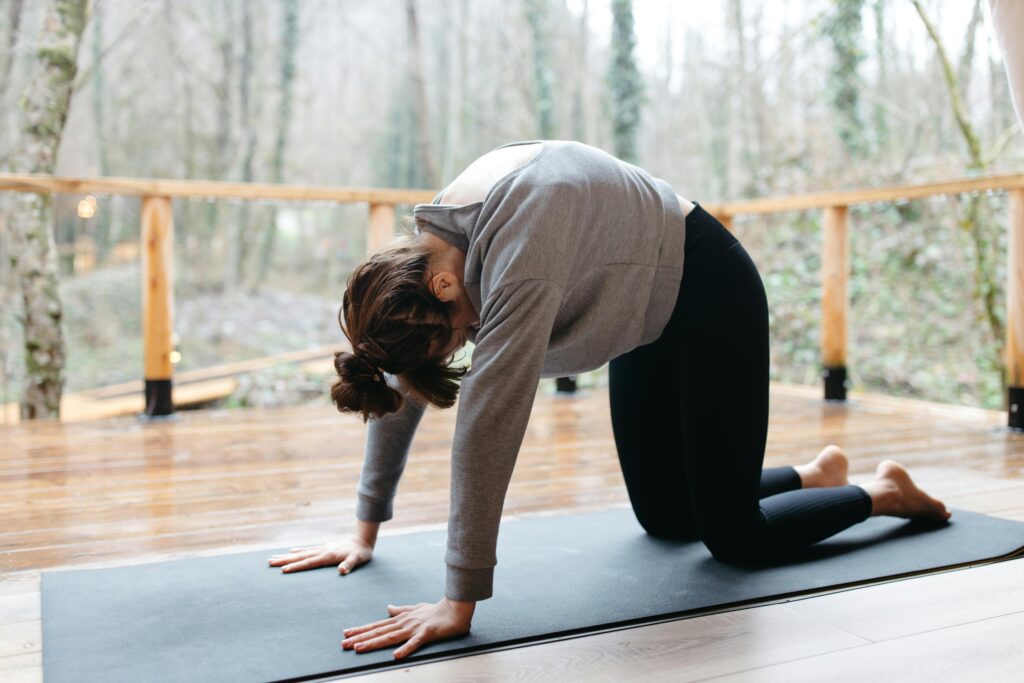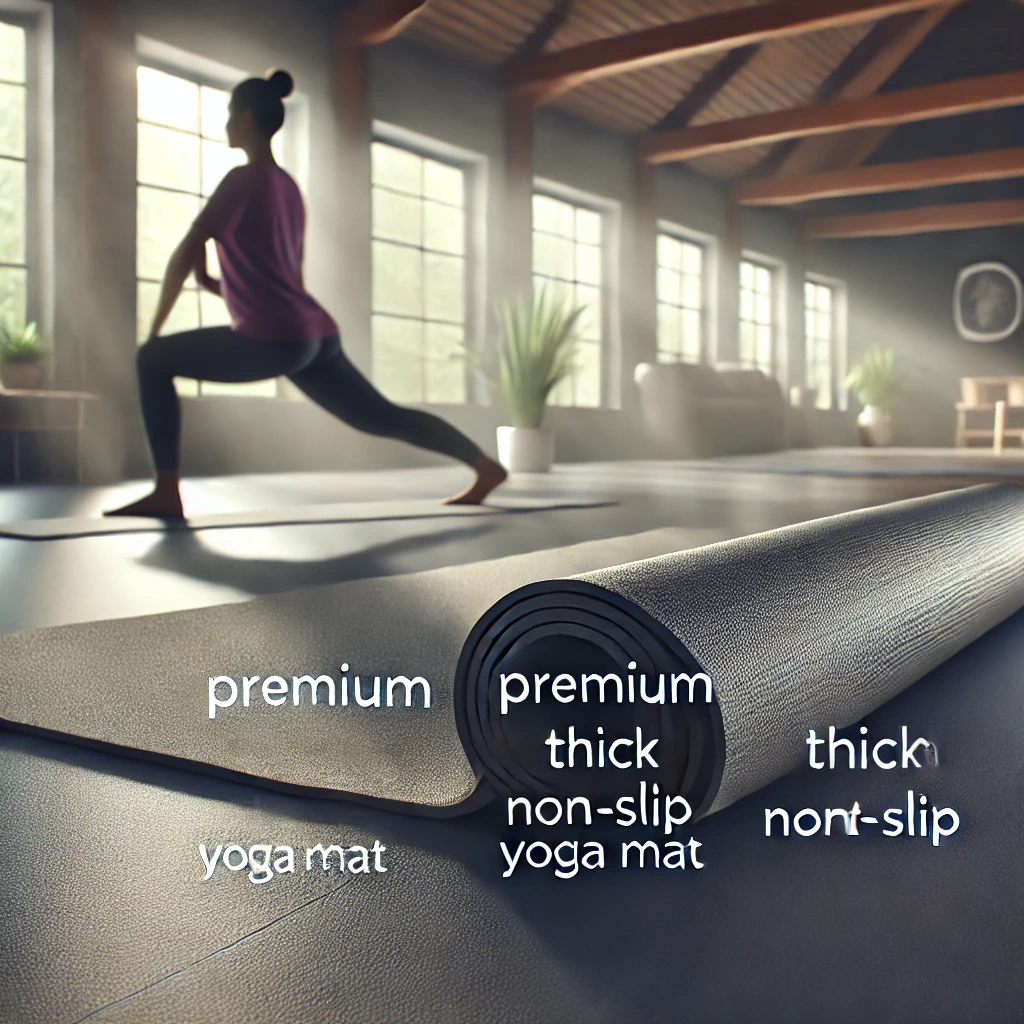Table of Contents
Introduction
Surya Namaskar yoga is not just an exercise—it’s a lifestyle. And if there is one practice that beautifully combines movement, breath, and awareness, it is Surya Namaskar, or the Sun Salutation.
This gorgeous sequence of twelve asanas is not only an amazing way to stretch and tone your body, but it also has profound spiritual and meditative depth.
Surya Namaskar is an ancient yogic technique handed down through the ages as a reverent way of worshipping the sun, the very source of life and energy on the planet.
The sequence is a harmonious combination of asanas (yoga poses), pranayama (breath control), and meditation and hence is a holistic mind-body exercise. It is a bridge between the physical and the spiritual, developing inner awareness as well as external vitality.
Based on Hatha Yoga, Surya Namaskar is more than a physical exercise. It aids in developing a closer relationship between your mind, body, and breath, thus an effective means for overall health.
The coordination of movement and breathing assists in awakening the energy paths of the body, regulating hormones, enhancing blood circulation, and clearing the mind. If performed regularly, it can increase flexibility, strengthen the body, stimulate metabolism, and improve mood.
Most practitioners practice Surya Namaskar as a moving meditation since it calls for full concentration and awareness. The rhythmic sequence of postures and conscious breathing generates a meditative condition that may soothe the mind, ease stress, and bring spiritual well-being.
For spiritual aspirants, it is a devotional gesture of thanksgiving to the sun, which represents enlightenment, consciousness, and self-awareness.
Yet another amazing thing about Surya Namaskar is that it is versatile. It can be done by beginners and experienced yogis alike, and it can also be adapted according to different fitness levels.
Whether you need a light morning stretch, a cardio-interactive workout, or a meditative yoga flow, Surya Namaskar can be modified to fit the bill.
In this blog, we’ll explore the origins, benefits, step-by-step instructions, and best practices of Surya Namaskar. Let’s dive in!

The History and Spiritual Significance of Surya Namaskar
Surya Namaskar is an exercise that has its roots in the ancient Vedic practices of India, which date back thousands of years. It has been mentioned in several Hindu scriptures, such as the Rig Veda, which is one of the oldest known texts in the world.
The sun, or Surya, has been revered as the giver of all life on Earth, representing vitality, wisdom, and spiritual awakening.
In ancient India, yogis and sages performed Surya Namaskar as a morning ritual, feeling that saluting the sun would infuse them with energy, power, and a balanced equilibrium between their inner and outer lives.
This practice was not just a bodily practice but a devotional oblation to the solar god, Surya, who is commonly seen sitting in a chariot pulled by seven horses, symbolizing the seven colors of the rainbow and the seven chakras of the human being.
The routine of Surya Namaskar is also connected with the idea of prana, life force energy. Practitioners complete the sequence with mindful breathing and intensify their pranic flow, which enhances their well-being.
In yogic science, the sun is identified with the Pingala Nadi, or the channel of energy that is responsible for vitality, action, and enthusiasm. Regular practice of Surya Namaskar stimulates this channel, and practitioners experience greater levels of energy and greater spiritual consciousness.
From times immemorial, Surya Namaskar has not only been used as a religious practice but also as a precursor to more intense yogic practice like meditation and pranayama (control of the breath).
It is usually practiced as a warm-up routine prior to executing other yoga asanas (postures) and is itself considered a whole sadhana (spiritual discipline).
Today, the religious value of Surya Namaskar is continued to be revered by numerous practitioners. A few practice chanting mantras addressed to the sun during the execution of the sequence, which makes it even more meditative in nature.
Traditional Surya Mantras, including the twelve sun names (Om Mitraya Namah, Om Ravaye Namah, etc.), are thought to endow the practice with sacred energy and induce harmony within.
Secondly, Surya Namaskar is closely related to the idea of cosmic rhythm. Just as the sun rises and sets, controlling the natural cycles of life, practicing Surya Namaskar synchronizes our bodies with the natural circadian rhythms, enhancing sleep, metabolism, and mental clarity.
The union of bodily movement, breathing control, and spiritual worship makes Surya Namaskar a dynamic and life-changing practice that has weathered the passage of time.
As a sacred morning ceremony, a fitness routine, or a meditation in motion, it remains an essential part of yoga and overall well-being.


The 12 Steps of Surya Namaskar (With Breath Coordination)
Doing Surya Namaskar with awareness, with synchronized breathing, can make a big difference in how you feel afterwards. Here’s a step-by-step breakdown:
Pranamasana (Prayer Pose) – Stand with feet together, hands in prayer position. Breathe deeply and center yourself.
Hasta Uttanasana (Raised Arms Pose) – Inhale and raise your arms up, slightly arching back to open your chest.
Padahastasana (Hand to Foot Pose) – Exhale and bend forward, bringing your hands to the ground.
Ashwa Sanchalanasana (Equestrian Pose) – Inhale, step your right leg back with your left knee bent.
Dandasana (Plank Pose) – Exhale, step your left leg back and create a firm plank.
Ashtanga Namaskara (Eight Limbs Pose) – Lower your knees, chest, and chin to the ground with your hips slightly raised.
Bhujangasana (Cobra Pose) – Inhale, lift your chest and contract your back muscles.
Adho Mukha Svanasana (Downward-Facing Dog Pose) – Exhale, come up onto your hips, making an inverted “V.”
Ashwa Sanchalanasana (Equestrian Pose, Opposite Leg) – Inhale and step your right foot forward.
Padahastasana (Hand to Foot Pose) – Exhale and bring your left foot up and fold forward over your legs.
Hasta Uttanasana (Raised Arms Pose) – Inhale and come up and stretch back.
Pranamasana (Prayer Pose) – Exhale, going back to a relaxed standing position.
For optimal benefit, strive for 6 to 12 rounds per session, with consistent, rhythmic breathing.
Surya Namaskar is a timeless practice that harmonizes the body, mind, and spirit. Whether you’re seeking physical strength, mental clarity, or spiritual awakening, incorporating it into your daily routine can lead to profound and lasting benefits.
Start today and experience the transformative power of the sun salutation! Namaste! ????
Yoga Mat Ultimate Comfort: Transform Your Practice with Superior Support!
Yoga is more than just a physical practice; it is a journey that nurtures the mind, body, and soul. A crucial aspect of this journey is having the right yoga mat that provides comfort, stability, and support.
Choosing the best yoga mat—especially a thick yoga mat—can significantly enhance your experience, allowing you to focus on alignment, breath, and movement without discomfort
. In this guide, we explore the importance of a quality yoga mat, factors to consider when purchasing one, and the benefits of using a thick yoga mat.
Why the Right Yoga Mat Matters
A yoga mat is not just an accessory; it is your personal space for meditation, stretching, and movement. Using a high-quality yoga mat ensures safety, prevents injuries, and maximizes comfort. Here are some reasons why investing in the right yoga mat is essential:
1. Enhances Comfort and Support
Yoga involves various poses that require prolonged contact with the floor. A thick yoga mat cushions your body, protecting your knees, wrists, and spine from excessive pressure, making poses like Child’s Pose and Camel Pose much more comfortable.
2. Provides Stability and Grip
A high-quality yoga mat with a non-slip surface ensures that you maintain stability in challenging poses. Sweat can make traditional mats slippery, but a mat with excellent grip minimizes risks, keeping you secure in every posture.
3. Promotes Proper Alignment
A well-designed yoga mat offers sufficient thickness and alignment markers, helping you maintain the correct posture. This reduces the risk of strain or injury and improves your overall technique.
4. Supports Various Yoga Styles
Different yoga styles require different mat features. A thick yoga mat is ideal for restorative and Yin yoga, where prolonged poses demand extra cushioning. Conversely, a thinner mat may be suitable for fast-paced styles like Ashtanga or Vinyasa yoga.


How to Choose the Best Yoga Mat for Ultimate Comfort
With a vast range of yoga mats available, selecting the right one can be overwhelming. Below are key factors to consider when choosing the best yoga mat for your practice:
1. Thickness: Finding the Right Balance
The thickness of your yoga mat plays a vital role in comfort and support. Yoga mats typically range from 1/16 inch (1.5mm) to 1/2 inch (12mm) in thickness.
- Standard Yoga Mats (3mm – 5mm): Provide a balance between stability and portability.
- Thick Yoga Mats (6mm – 12mm): Offer enhanced cushioning, making them perfect for joint support and comfort.
A thick yoga mat is recommended for those with sensitive knees or anyone seeking extra support during floor-based poses.
2. Material: Selecting the Best Composition
The material of a yoga mat affects its durability, grip, and eco-friendliness. Common yoga mat materials include:
- PVC (Polyvinyl Chloride): Highly durable and offers excellent grip, but not eco-friendly.
- TPE (Thermoplastic Elastomer): Environmentally friendlier than PVC, with good cushioning and flexibility.
- Natural Rubber: Provides great grip and eco-consciousness but may not be suitable for those with latex allergies.
- Cork: Anti-microbial, non-toxic, and offers a natural feel with excellent sweat absorption.
- Cotton/Jute: Sustainable, breathable, and ideal for hot yoga due to its moisture-wicking properties.
3. Texture and Grip: Ensuring Stability
A non-slip surface is essential for maintaining balance in poses. Textured mats provide superior grip, preventing slips, especially during intense sessions or hot yoga practices.
4. Size: Ensuring Adequate Space
The standard yoga mat size is 24” x 68”, but taller individuals may prefer 24” x 72” or 26” x 80” for more space.
5. Portability: Lightweight vs. Heavy Mats
Frequent travelers may opt for lightweight, foldable yoga mats, while a thick yoga mat, though heavier, provides additional cushioning for home-based practice.
Benefits of Using a Thick Yoga Mat
Opting for a thick yoga mat comes with multiple advantages, making it an excellent choice for practitioners who prioritize comfort and joint protection.
1. Joint Protection and Pain Relief
A thick yoga mat cushions your knees, elbows, and wrists, preventing discomfort during poses that require prolonged contact with the floor.
2. Enhanced Support for Floor-Based Poses
Thicker mats are particularly beneficial for yoga styles that involve extended sitting or lying down, such as Yin or Restorative yoga.
3. Ideal for Beginners
New yogis often struggle with balance and stability. A thick yoga mat provides better support, reducing the risk of injury.
4. Comfort for Meditation and Relaxation
If your practice includes long meditation sessions, a thick yoga mat provides a comfortable surface for sitting or lying down.
5. Reduces Fatigue
A thick mat absorbs impact, reducing strain and fatigue, allowing for longer and more enjoyable yoga sessions.


Frequently Asked Questions (FAQs)
1. Is a thick yoga mat better than a thin one?
A thick yoga mat provides better cushioning and joint support, making it ideal for beginners, restorative yoga, and individuals with joint sensitivity. However, thinner mats offer more stability for balance-intensive poses.
2. Can I use a thick yoga mat for hot yoga?
Yes, but ensure the mat has a moisture-resistant and non-slip surface. Adding a yoga towel can improve grip and absorb sweat.
3. How do I know if my yoga mat has good grip?
Look for textured surfaces or mats with a sticky feel. Testing a few poses like Downward Dog can help determine if the mat provides sufficient traction.
4. How often should I clean my yoga mat?
It’s recommended to clean your yoga mat after every few uses, especially if you sweat a lot. Regular maintenance prevents bacteria buildup and extends the mat’s lifespan.
5. Can I travel with a thick yoga mat?
Thick yoga mats tend to be heavier and less portable. If you need a travel-friendly option, consider a foldable or lightweight mat that still offers adequate cushioning.
Final Thoughts: Elevate Your Yoga Practice with the Right Mat
Investing in the right yoga mat—especially a thick yoga mat—can transform your yoga experience. The added support, comfort, and stability allow you to focus on mindfulness, movement, and breath without distraction.
Whether you’re a beginner or an experienced yogi, selecting a mat tailored to your needs ensures a more enjoyable, pain-free practice.
Find the perfect yoga mat for your style and experience the ultimate comfort in every pose!
